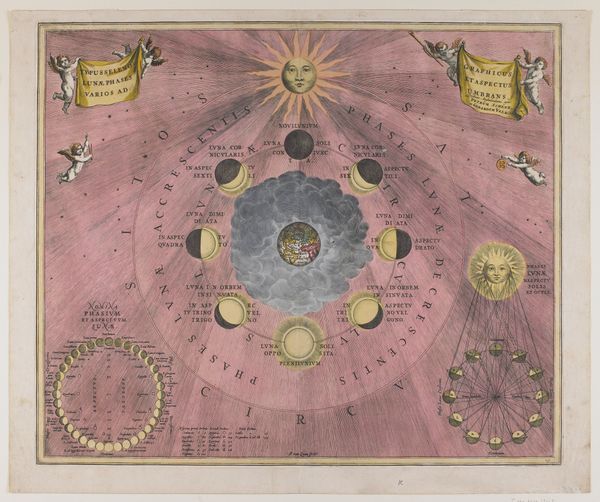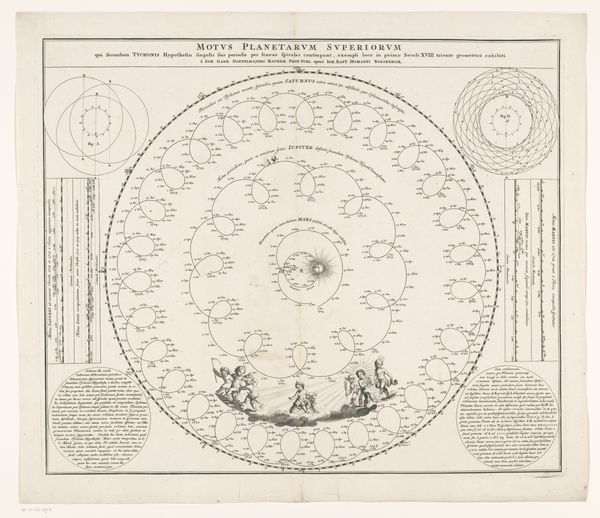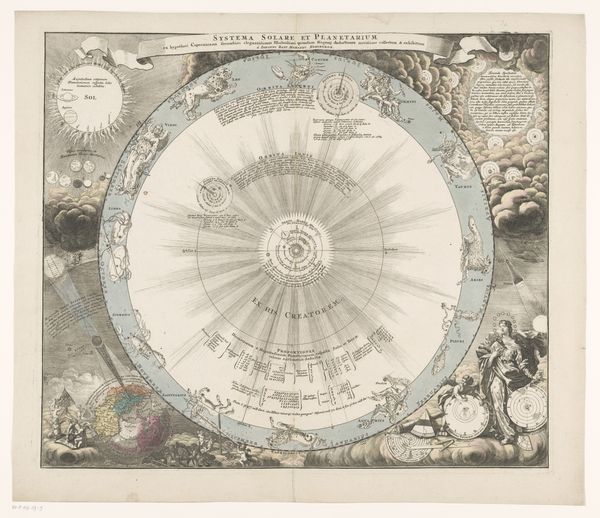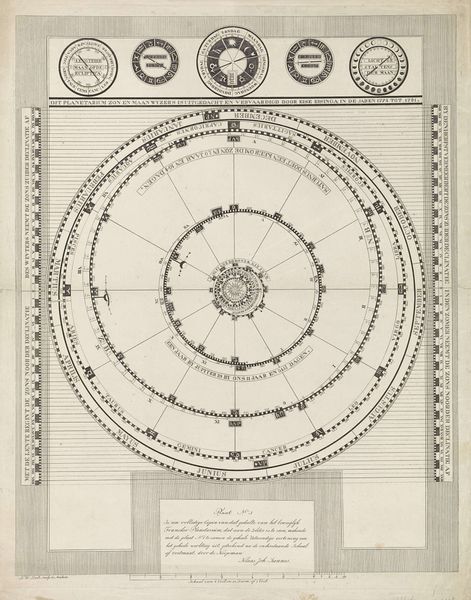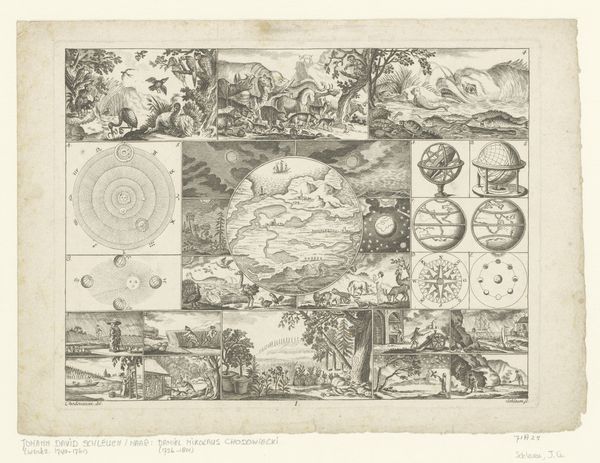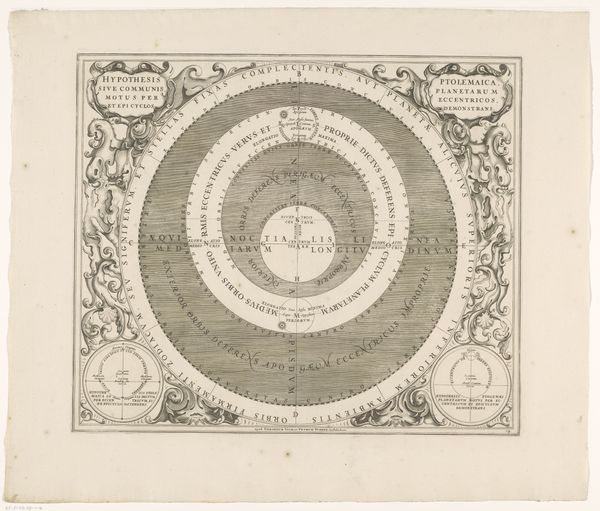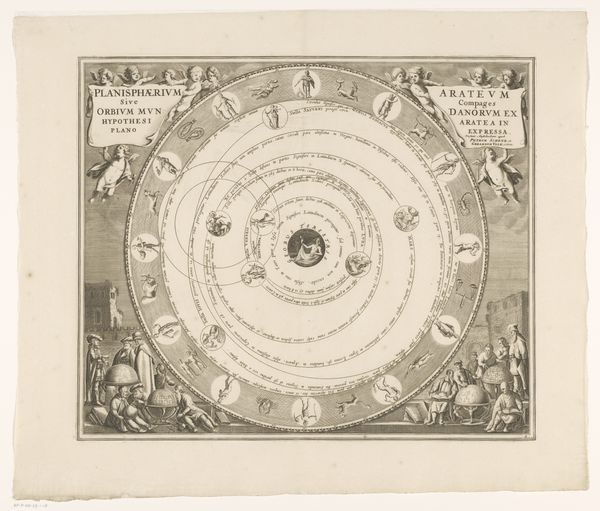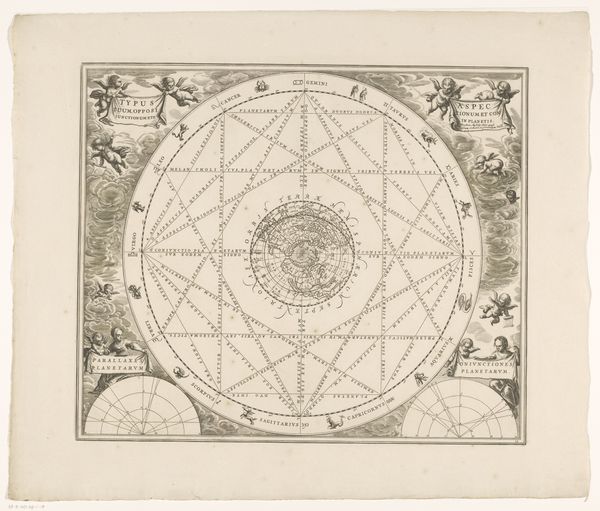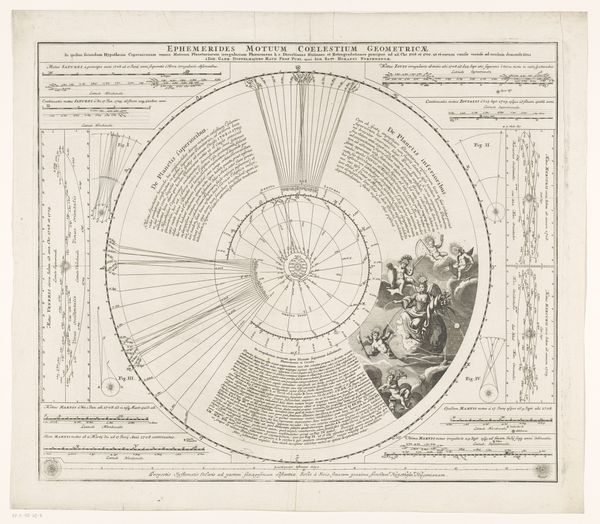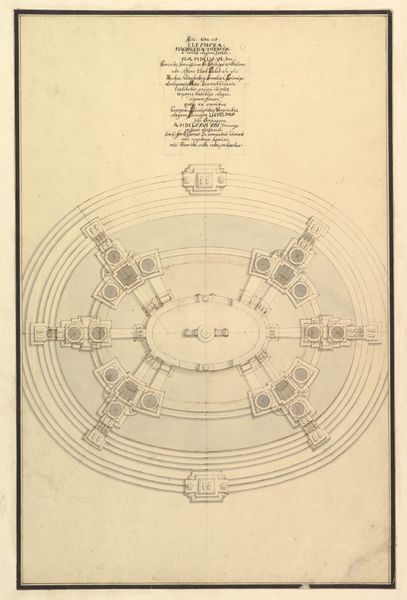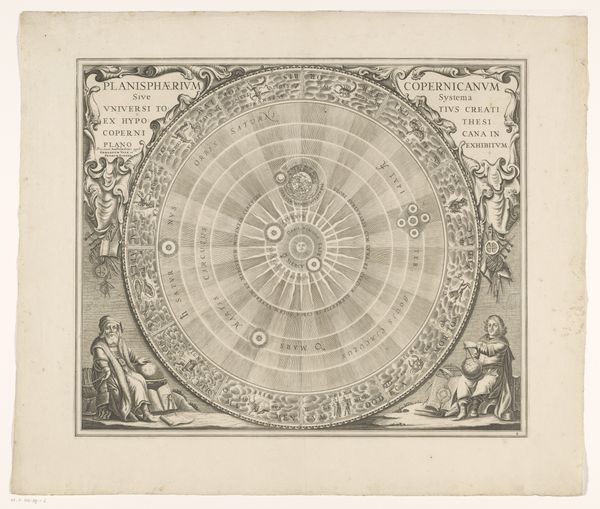
print, engraving
#
baroque
# print
#
old engraving style
#
geometric
#
history-painting
#
engraving
#
historical font
Dimensions: height 430 mm, width 509 mm
Copyright: Rijks Museum: Open Domain
Curator: It's fascinating how seemingly objective scientific diagrams like this 1708 print, "Kaart van de aarde met de verschillende standen van de maan en de zon" by Johannes van Loon, are also reflections of their historical context. Editor: Yes, this "Map of the Earth with the Different Positions of the Moon and the Sun" has such an aura of scientific confidence, but also feels fantastical, almost like something out of an alchemist's study. The combination of detailed diagrams with these cherubic figures is especially striking. How do you interpret this work? Curator: I see it as a visual manifestation of the Enlightenment’s attempts to reconcile faith and reason, perhaps a project more about hope than established, lasting fact. Consider the way the sun and moon are personified with faces—it reflects a pre-Enlightenment understanding of the cosmos, while the detailed phases are a nod towards emerging scientific accuracy. It also reveals a very Eurocentric view, doesn’t it? The earth is centered, implicitly placing Europe at the heart of the cosmos. Editor: I hadn’t thought about the Eurocentric aspect so directly, but that makes complete sense. The emphasis on observation, almost presented as fact, contrasts sharply with the angelic figures. Was this perhaps an attempt to make potentially controversial scientific observations more palatable to a religious audience? Curator: Precisely! And it is essential to recognize that this "objectivity" was often wielded in service of colonial expansion, providing a framework for mapping, navigating, and ultimately, controlling the world. It highlights how science itself is never neutral, but always intertwined with power dynamics. Who gets to define what "truth" is, and for what purposes? Editor: So, beneath the scientific presentation, there’s a complex interplay of religion, emerging scientific thought, and even colonial ambition embedded within this seemingly simple print. I am beginning to see beyond the surface depiction and appreciate the convergence of different aspects of human existence. Curator: Exactly. It reminds us to critically examine all sources of information, even those presented as purely factual or 'scientific', as products of their specific time and social context, shaped by those who have the power to frame them.
Comments
No comments
Be the first to comment and join the conversation on the ultimate creative platform.
